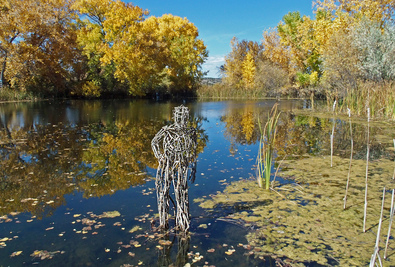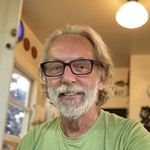November 25, 2017
 This past Tuesday, Paul completed his stem cell harvesting at Stanford. He was hooked up to an apharesis machine that collected his stem cells for most of the day. The machine looks a little like a cyborg dishwasher, and the harvesting was very successful. Stanford sent Paul home after only one day. It often takes 2-4 days, and we were prepared to go the distance. The nurse at Stanford laughingly said that Paul was “an over-achiever” because normally the amount of viable stem cells they need to go ahead with the transplant is 4.0 units which is good enough for 2 transplants. The number of Paul’s units was 18.7 -- good enough for 9 transplants! After the stem cells were collected, they were frozen. They’ll be thawed out and re-introduced during the transplant. While Paul was hooked up to the machine, Tim got into many technical discussions with the nurse about how the apharesis machine works as well as the latest scientific research on stem cell transplants. Tim really misses practicing medicine, so this was a nice opportunity for him to reconnect.
This past Tuesday, Paul completed his stem cell harvesting at Stanford. He was hooked up to an apharesis machine that collected his stem cells for most of the day. The machine looks a little like a cyborg dishwasher, and the harvesting was very successful. Stanford sent Paul home after only one day. It often takes 2-4 days, and we were prepared to go the distance. The nurse at Stanford laughingly said that Paul was “an over-achiever” because normally the amount of viable stem cells they need to go ahead with the transplant is 4.0 units which is good enough for 2 transplants. The number of Paul’s units was 18.7 -- good enough for 9 transplants! After the stem cells were collected, they were frozen. They’ll be thawed out and re-introduced during the transplant. While Paul was hooked up to the machine, Tim got into many technical discussions with the nurse about how the apharesis machine works as well as the latest scientific research on stem cell transplants. Tim really misses practicing medicine, so this was a nice opportunity for him to reconnect.
The next step for Paul will be the actual transplant on December 12. A few days before that, he’ll have to be hospitalized and receive two different heavy-duty chemos. These chemos will wipe out most of his bone marrow and immune system in preparation for the re-introduction of his saved stem cells. After the transplant, the lengthy (2-3 or more weeks) process of engrafting begins (i.e, waiting for the re-introduced stem cells to settle in and reproduce). This will probably be the most “risky” time as Paul will be entirely without immune protection.
We had a quiet Thanksgiving at home, and we’re both glad to have a little bit of respite from all the comings and goings and procedures. We’re so thankful for all our friends and family who support us and keep us plugging away.
Sculpture at the Leona Curtin Wetland Preserve, Santa Fe, NM
News and Updates from Paul
